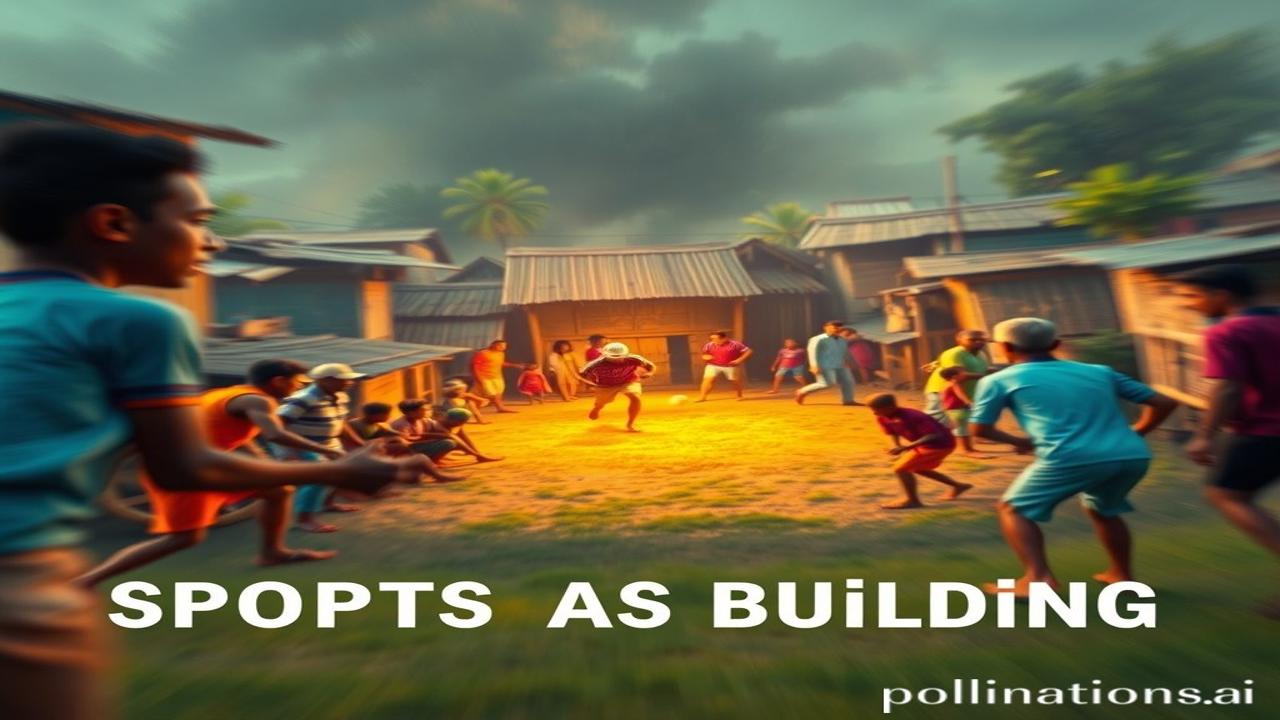Gilli Danda Ki Goonj: How Sports Build Communities in Indian Villages
Kabhi socha hai, gaon ki mitti mein basi khushboo, aur dhoop mein chamakti nadiyon ke kinare… unme chhipe hue kuch aise khel hain, jo sirf khel nahi, balki ekta ke dhaage hain? Waqt ki dhool mein dabe, in khelon ne na jaane kitne dil jode hain, kitni dostiyaan banai hain. Aaj hum chalte hain unhi galiyon mein, aur dekhte hain kaise sports, especially in villages, community building ka ek powerful zariya hai.
Sports: A Village’s Heartbeat – Historical & Cultural Context
What are we talking about? We’re diving into the world of traditional Indian sports and how they act as a social glue in village life. Think of Gilli Danda, Kho-Kho, Kabaddi, wrestling matches (kushti) – games that often need nothing more than a patch of open land and a few willing players.
Where and When did it all start? Well, the roots go deep! Many of these games have been around for centuries, with mentions even in ancient texts. Kabaddi, for instance, has a history stretching back thousands of years. Kushti, or wrestling, was a vital part of warrior training.
Why is this important? Because these aren’t just games; they are vessels of our culture and tradition. They teach teamwork, strategy, discipline, and above all, they build a sense of belonging – a feeling of apnapan that’s at the heart of Bharatiyata. These sports are often intrinsically linked to festivals, harvest celebrations, and other community events, reinforcing their social significance. Imagine the excitement surrounding a village Kabaddi tournament during Diwali!
Zameeni Sach – Log aur Jeevan: The Human Element
Imagine the village of Rampur. The sun beats down, but under the shade of the banyan tree, a group of children are engrossed in a game of Gilli Danda. Ten-year-old Raju, small but quick, slams the gilli with his stick. The dust flies, shouts of excitement erupt, and for a moment, all differences – of caste, creed, or family – disappear. They are just children, bound by the thrill of the game.
Nearby, in the akhaada (wrestling pit), old man Kishan Chacha watches intently as two young men grapple. He remembers his own days as a wrestler, the camaraderie, the respect, the sheer hard work. “Kushti sirf takat ka khel nahi hai beta,” he tells one of the boys, wiping the sweat from his brow. “Yeh adab aur discipline bhi sikhata hai. Aur sabse badi baat, yeh gaon ko ek saath laata hai.” (Wrestling isn’t just about strength, son. It teaches respect and discipline. And most importantly, it brings the village together.)
Ma Rukmini offers cool water to the players, a small act of kindness that speaks volumes about the spirit of community. These aren’t just games; they are woven into the fabric of their lives. They are a source of joy, a means of social interaction, and a way to keep traditions alive.
Dharohar aur Pehchan: Cultural Significance Today
Even today, as cities expand and technology takes over, the spirit of these village sports remains strong. You’ll still find Kabaddi tournaments drawing huge crowds in rural areas. Gilli Danda remains a popular pastime for children. These games are a living link to our past, a reminder of a simpler, more communal way of life.
They are also important for preserving our unique cultural identity. In a world increasingly dominated by Western sports, these traditional games offer a powerful way to connect with our roots and celebrate our Bharatiyata. They are a symbol of resilience, of our ability to hold onto our traditions even in the face of change.
Mazedar Tathya ya Bhram-Bhanjak: Fun Fact or Myth-Buster
Log samajhte hain ki Kabaddi sirf ek mazboot aadmi ka khel hai, lekin asli sach yeh hai ki strategy, agility, aur teamwork ismein utne hi zaroori hain. (People think Kabaddi is just a game for strong men, but the real truth is that strategy, agility, and teamwork are just as important.) The ability to anticipate your opponent’s moves and work together as a team is what truly makes a winning Kabaddi team.
Drishya aur Bhavnaein: Visual & Sensory Layer
The air smells of dust and sweat, mixed with the sweet aroma of jalebis being fried at a nearby stall. The rhythmic chants and cheers of the crowd create a pulsating energy. The rough feel of the earth beneath your bare feet, the sting of the sun on your skin, the thud of the gilli hitting the danda – these are the sensory experiences that define village sports. The temple bells clang in the distance, a constant reminder of the spiritual undercurrents of village life.
Antim Vichar ya Uddharan: Closing Insight or Quote
These games are more than just physical activity; they are an embodiment of community spirit, resilience, and dharohar (heritage). They remind us of the importance of human connection and the enduring power of tradition.
“खेल जीवन का सार है, जो हमें सिखाता है हार-जीत, संघर्ष और एकता।” (Sports are the essence of life, teaching us victory and defeat, struggle and unity.) Let’s keep these traditions alive, for they are the threads that bind our communities together.
